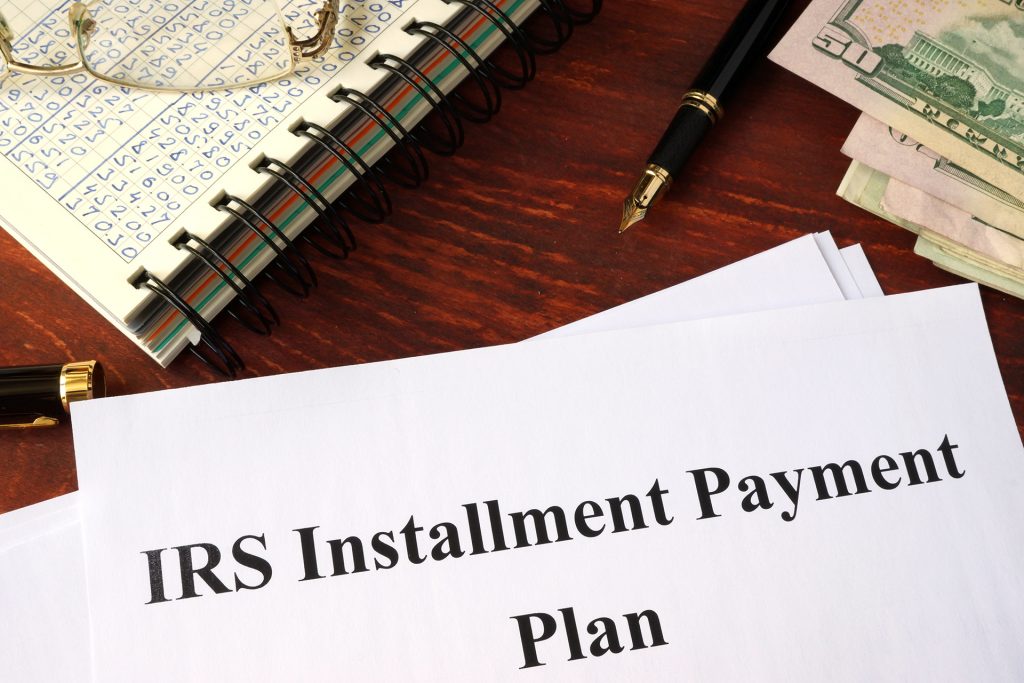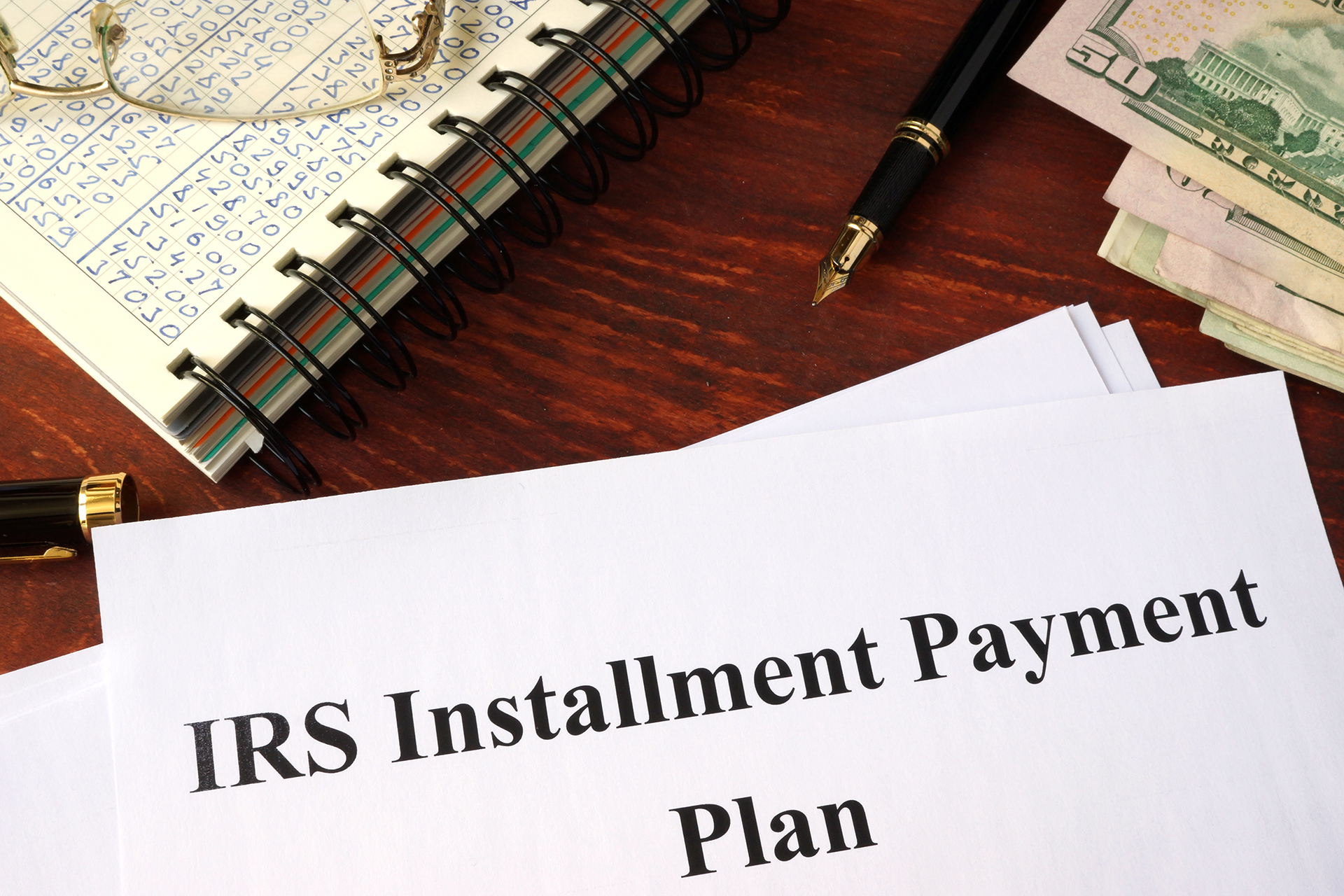The IRS has a number of categories and ways to deal with anyone that is delinquent with their tax returns and payment obligations. Below, is a synopsis of what the IRS can do to you, as well as your alternatives once taxes have been filed. The EZTaX Solver software will act as your personal accountant and automatically calculate your lowest possible outcome depending on your financial data input. Should you (unfortunately) not have filed taxes over a period of time, we have also outlined what the IRS can (and will) do to get their money from you. In some cases, you may need some extra help by working with one of our tax professionals to guide you through some of the more onerous classifications, such as a wage garnishment or bank levy. In ALL cases the EZTaX Solver software can and should be your first step to determine your tax repayment plan.
-

Payroll Levy – Wage Garnishment -

Bank Levy -

Currently not collectible -

Installment Agreement -

Offer In Compromise (OIC)

Unfiled Tax Returns
Condition for any tax relief solution: all returns must be filed!!
The IRS will never consider any tax problem resolution until all due tax returns have been filed. All missing tax returns must be filed and posted first. You (or we) can easily determine a delinquent taxpayer’s status with the IRS by obtaining “Records of Account.”
Consequences of not filing Tax Returns
Many people don’t file their taxes simply because they cannot pay their taxes. An important thing to know is that the penalties for not filing a tax return grow much faster than those penalties for not paying. Even if you are owed money on your return and you have not filed, the IRS can deny you a refund on those amounts if enough time passes.
Consequences of being a non-filer
- Buying or refinancing a house requires all due tax returns have been filed.
- Want to get married? Not filing tax returns could be considered a “deal breaker” to a future spouse.
- Should you travel outside the United States, and you have not filed all due tax returns:
- the Federal Government could refuse to issue you a passport, AND/OR
- the Federal Government can “lock” your current passport if you owe in excess of $50,000.
- In order to get Health Insurance on a health insurance exchange or the Patient Protection and Affordable Care Act you are required to have filed your tax returns.
When a taxpayer doesn’t file a return, the IRS will use existing information in its system to determine if the taxpayer is at risk for owing taxes. The information in the IRS system includes forms provided by third parties such as employers, like your W-2, 1099 and 1098 forms.
When the IRS uses this information to estimate a taxpayer’s debt, it does not consider the taxpayer’s filing status or deductions because the IRS doesn’t know what he or she is eligible to claim on an unfiled return. Therefore, just because the IRS thinks the taxpayer might owe money, doesn’t necessarily mean that he or she will.
The only way to begin the process of correcting your IRS dilemma is by filing all past due tax returns. Virtually always the amount the IRS claims the taxpayer owes is hugely reduced after filing a proper tax return. This will substantially and immediately reduce penalties and interest. The IRS will generally adjust a taxpayer’s account to reflect the correct figures. Once tax returns have been filed you can use the EZTaX Solver Software to negotiate your real outcomes towards a tax and IRS resolution.
Payroll Levy – Wage Garnishment
The IRS will easily get a delinquent taxpayer’s attention and his money with a wage levy, leaving the hapless taxpayer a meager portion of his/her paycheck; The IRS can legally take up to 85% of a taxpayer’s net earnings.
The IRS can release a Wage Levy but there are conditions for a Wage Levy Release:
- All previous year’s tax returns must have been filed and posted. Missing returns must be prepared and filed.
- IRS may file for a taxpayer who is not current; these returns are called SFR, “Substitute for Return”. A proper return can be filed in lieu of the IRS prepared SFR which ignores any and all deductions.
- Filing proper returns reduces the tax debt substantially in most cases.
- A payment “Installment Agreement” must be negotiated based on “Disposable Income” a number determined by allowable expenses and net income of the delinquent taxpayer. Using the EZTaX Solver Software it will always calculate the lowest possible number that the IRS must accept. The EZTaX Solver’s proprietary and patent pending process levels the playing field with the IRS in favor of the delinquent taxpayer and will determine the fastest and least expensive way to secure a payroll levy release.
I THINK I MAY QUALIFY FOR THE CURRENTLY NOT COLLECTIBLE STATUS. WANT TO FIND OUT?
Bank Levy
Imagine finding out all your bank accounts have been cleaned out. The IRS can and will take every last penny! If the amount they took did not cover what is owed, the IRS will continue emptying your bank accounts until the entire liability has been paid off. The IRS is fully aware that levying your bank accounts will cause checks to bounce. The IRS does not care! Their only goal is to collect the back taxes owed.
Bank Levy Release Conditions
It is not an easy task to release a bank levy and requires proof of financial hardship from the taxpayer such as an eviction notice or utility shut-off notice. Many other documents will need to be presented along with a request for bank levy releases. If a case for hardship cannot be made the IRS will simply tell you: “We are sorry but our policy is not to release bank levies under any circumstances.” They are quite serious about this!
Bank Levy Solutions
The IRS orders your bank to freeze all the money in your account(s) up to the amount of the levy (the total the IRS claims you owe) for 21 days. If the IRS has not provided a “Bank Levy Release” notice your bank must then send the money to the IRS. Time is rapidly running out and the IRS has already told you “No” when you pleaded and begged them to let you pay for living expenses. You will have much better odds in your favor by letting one of our certified tax relief professionals handle this for you.

Installment Agreements
If a taxpayer is unable to pay his/her tax liability in full there are other options, such as Installment Agreements. There are different types of Installment Agreements, depending on amounts owed and levels of non-compliance with IRS rules.
The EZTaX Solver software program will never generate an Installment Agreement with the IRS that our clients cannot live with. Our proprietary, patent pending process will always identify the lowest legally possible payment to the IRS and the best plan that the IRS must accept.
- A taxpayer’s request for an installment agreement will be denied if all required tax returns have not been filed.
- Any refund due to a taxpayer in a future year will be applied against the amount owed.
- If a taxpayer’s refund is applied to his/her balance, he/she is still required to make the regular monthly installment payment until the debt has been satisfied in full or the “Collection Status Expiration Date” (a 10-year period starting when the tax return has been filed) has expired.
HOW MUCH WOULD MY INSTALLMENT AGREEMENT BE?
Guaranteed Installment Agreement
A taxpayer is eligible for a guaranteed installment agreement if the tax owed is not more than $10,000 and meets the following criteria:
- During the past 5 tax years, the taxpayer (and his/her spouse if filing a joint return) have timely filed all income tax returns.
- During the past 5 tax years, the taxpayer has paid any income tax due.
- During the past 5 tax years the taxpayer has not entered into an installment agreement for payment of income tax or an offer in compromise has been accepted.
- The taxpayer agrees to pay the full amount owed within 36 months and agrees to comply with the tax laws while the agreement is in effect.
- The taxpayer is financially unable to pay the liability in full when due.
Streamlined Installment Agreement
Streamlined installment agreements work best for taxpayers who owe the IRS up to $50,000 and who cannot pay off their tax debt in a lump sum. The IRS does not require a comprehensive financial statement (IRS Form 433f – Collection Information Statement). However, a few conditions apply:
- The taxes owed are not more than 5 years old and all tax returns must have been filed.
- There are no other Installment Agreements currently under way with the IRS.
- The taxpayer is not in Bankruptcy and no Offer in Compromise has been accepted by the IRS.
- The taxpayer agrees to pay the full debt over a 72 month period in equal payments (amount owed divided by 72).
Partial Pay Installment Agreement
The Partial Pay Installment Agreement payment option provides an appropriate payment option for many taxpayers.
- When a taxpayer is not able to pay the owed tax debt in full we can negotiate an Installment Agreement based on what the IRS calls “Disposable Income” which is the difference between net earnings minus “Allowable Living Expenses”. EZTaX Solver proprietary, patent pending process determines if a taxpayer qualifies for this plan, and if so what the legally lowest monthly payment that the IRS must accept will be.
- Taxpayers who are being considered for a Partial Pay Installment Agreement must provide complete and accurate financial information that will be reviewed and verified. Additionally, taxpayers with Partial Pay Installment Agreements will be subject to a subsequent financial review every two years. As a result of this review, the amount of the installment payments could increase or the agreement could be terminated, if the taxpayer’s financial condition improves.
Currently Not Collectible
If the EZTaX Solver software program indicates that a taxpayer is not able to pay the delinquent amount owed to the IRS by way of an Installment Agreement or an Offer in Compromise, he/she can request that the IRS places the taxpayer’s account on a status called “Currently Not Collectible”.
Only Taxpayers with negative monthly cash flow will qualify for Currently not Collectible status.
Do I still owe taxes if I am on Currently Not Collectible status?
Currently Not Collectible status removes the taxpayer’s account from the active collection efforts by the IRS and will remain in effect until the taxpayer’s financial situation changes or until the tax liability runs out. It does not however remove or eliminate the tax debt, it only puts the tax debt on hold. The tax debt is still owed and will continue to accrue penalties and interest.
What happens if my income increases while Currently Not Collectible?
If a taxpayer’s income increases to a level making it possible to make payments to the IRS the taxpayer will then be notified by the IRS that collection activities on his/her delinquent account will be reinstated.
Does Currently Not Collectible status affect credit ratings?
While a taxpayer is in Currently Not Collectible status, his/her credit rating may be negatively affected as the IRS will file a lien against the taxpayer’s property or Social Security Number.
FIND OUT IF YOU QUALIFY FOR THE CURRENTLY NOT COLLECTIVLE STATUS.
Offer In Compromise (OIC)
You may have heard this slogan on the radio or cable TV: “Your Tax Debt can be settled for Pennies on the Dollar with an Offer in Compromise!”
And it sounds good but deep down we all know “If it sounds too good to be true it probably is.” Since many other unrealistic claims are also made, we advise against using these methods to deal with taxpayer’s delinquent accounts for the reasons described below.
What the IRS says about Offers In Compromise
Why don’t we provide OICs as one of our services?
The main reason: our primary goal is to resolve a delinquent taxpayer’s IRS issues as rapidly, efficiently and inexpensively as possible. The Offer in Compromise process can last for months and sometimes over a year. During this time the taxpayer must make payments to the IRS without any guarantee that the Offer in Compromise will be accepted. There are too many variables at the discretion of the IRS making the Offer in Compromise program an inefficient and uncertain way to solve delinquent tax issues.
What is the success rate of Offers in Compromise?
Only a very small percentage of Offers in Compromise (OIC) files with the IRS will be accepted and only so after intense negotiations. Most, if not all Offers in Compromise are initially rejected by the IRS with a request for more information, therefore delaying delinquent tax resolution.
Are there risks with an Offer in Compromise?
Taxpayers need to know that once an Offer in Compromise has finally been accepted by the IRS and the negotiated debt has been fully paid, the IRS expects the taxpayer to stay current on his/her taxes from that point forward. This means filing tax returns on time and paying the amounts due when filing taxes if there is no tax refund. The taxpayer is not allowed to default for the next 5 years after an Offer in Compromise has been accepted. Since some taxpayers have a tendency to be “repeat offenders” the benefits of a successful Offer in Compromise can be totally reversed by defaulting again during the aforementioned five-year time probationary period.
Hopefully after reading this page delinquent taxpayers will understand why Offers in Compromise are not a part of our regular range of tax resolution additional services.

